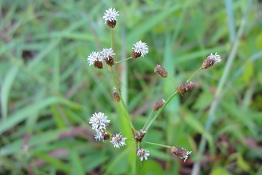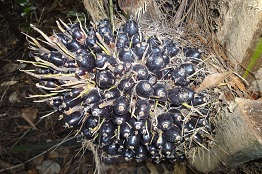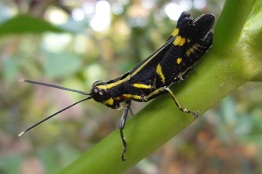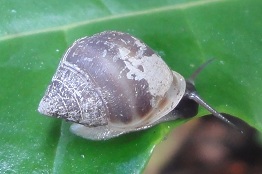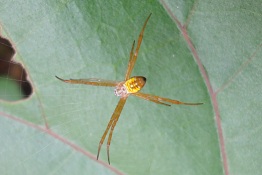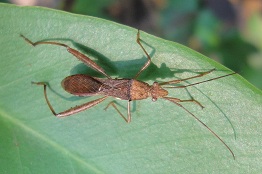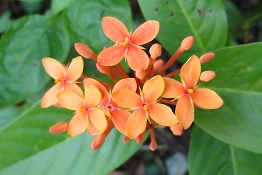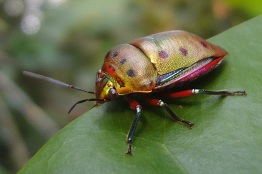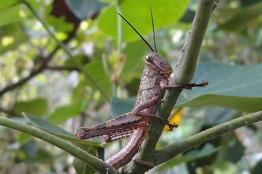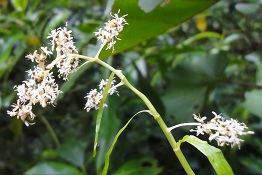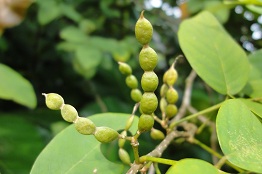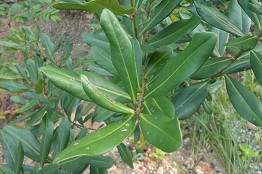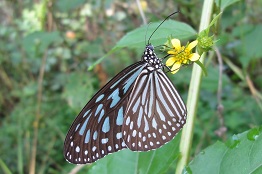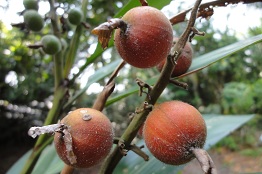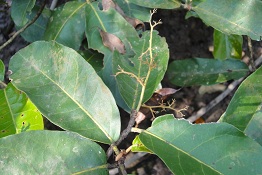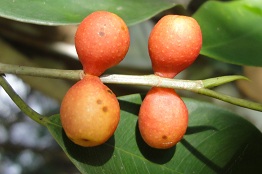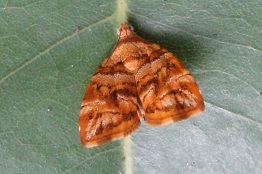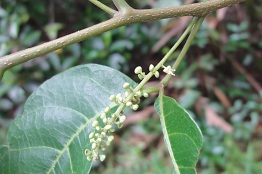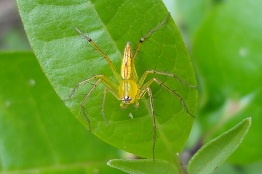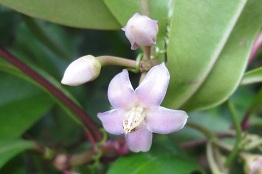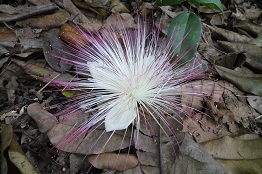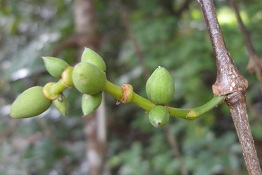Highlight:
s.jpg) I had not set foot on Sungei Buloh Wetland Reserve for almost 6 months, with the last one on 31 December last year.
I must be quite busy and time really flies. As it was a Saturday, which was considered a weekday, my start point would have to be the Kranji Trail since the bus only stopped nearby before turning back
to where it come from.
I had not set foot on Sungei Buloh Wetland Reserve for almost 6 months, with the last one on 31 December last year.
I must be quite busy and time really flies. As it was a Saturday, which was considered a weekday, my start point would have to be the Kranji Trail since the bus only stopped nearby before turning back
to where it come from.
s.jpg) The first set of flowers that caught my attention was from the
Skunk Vine (Paederia foetida). The vine was growing among the
Mile-a-minute Weed (Mikania micrantha), a common invasive vine. The leaf of Skunk Vine would produce an unpleasant smell when crushed
though I had not tried it myself. The plant is also considered as herb by some. Indeed, someone wrote to me asking for the location of this vine the very next day after my visit.
The first set of flowers that caught my attention was from the
Skunk Vine (Paederia foetida). The vine was growing among the
Mile-a-minute Weed (Mikania micrantha), a common invasive vine. The leaf of Skunk Vine would produce an unpleasant smell when crushed
though I had not tried it myself. The plant is also considered as herb by some. Indeed, someone wrote to me asking for the location of this vine the very next day after my visit.
s.jpg)
s.jpg)
s.jpg) The tide was rather low, exposing the muddy ground
at some areas. I took the opportunity to walk along the soggy and blackish ground but not too far off the trail so that my feet
would not get soak in the sea water. These
Black-mouth mangrove periwinkle snails (Littoraria melanostoma)
with yellowish-green shells were seen everywhere at one particular area.
The tide was rather low, exposing the muddy ground
at some areas. I took the opportunity to walk along the soggy and blackish ground but not too far off the trail so that my feet
would not get soak in the sea water. These
Black-mouth mangrove periwinkle snails (Littoraria melanostoma)
with yellowish-green shells were seen everywhere at one particular area.
s.jpg) The very common woody climber, Common Derris (Derris trifoliata),
was in flowering season. As it tends to climb all over any trees, one may think that the trees were flowering. This climber was so common that you could not possibly have missed it. The last picture on
the right shows the seed pods, which were broad and flat.
The very common woody climber, Common Derris (Derris trifoliata),
was in flowering season. As it tends to climb all over any trees, one may think that the trees were flowering. This climber was so common that you could not possibly have missed it. The last picture on
the right shows the seed pods, which were broad and flat.
s.jpg)
s.jpg)
s.jpg)
For sure, there were mini-beast or tiny animals, refer to some as critters. A group of 5 weaver ants (Oecophylla smaragdina) underneath a leaf were seen guarding an early instar caterpillar.
s.jpg) Theses ants are ferocious with painful bites. Anyone who had run around the wild long enough would have
experience those bites.
Theses ants are ferocious with painful bites. Anyone who had run around the wild long enough would have
experience those bites.
s.jpg) A Huntsman Spider (Heteropoda venatoria), a type of jumping spider, was found hiding among the leaves of the
Sea Hibiscus (Hibiscus tiliaceus).
A Huntsman Spider (Heteropoda venatoria), a type of jumping spider, was found hiding among the leaves of the
Sea Hibiscus (Hibiscus tiliaceus).
s.jpg)
s.jpg) The flowers of this plant turn
from yellow in the late morning to red by the evening.
The flowers of this plant turn
from yellow in the late morning to red by the evening.
s.jpg)
s.jpg)
Near the end of the Kranji
Trail, there was a large cage at the side of the track. The text (picture far right) on the cage explains the purpose of its existence. Based on its condition, it was probably not in use for quite a while.
s.jpg)
s.jpg)
Not too far away from the
cage, I saw the only new plant on this trip. It was a climber that should be Dischidia acutifolia. I had at first thought that it is a type of Hoya plant
until I saw its flowers. The common Dischidia species found in the Reserve was the Ant Plant (Dischidia major).
s.jpg)
At some dry and sandy spots along the track, usually under sheltered areas, you might find these sunken
sandy pits. They were traps set up by larva of the Antlion. At the bottom of each pit, covered in the sand, was a hidden larva awaiting for any fallen
prey such as ants. The side of the pit was layered with fine sand particles making it rather slippery. When a prey fell into the pit, it was very hard to get itself out of the pit. The sand below started to
move and the prey was being dragged into the sand.
I finished my round at about 11:30 am. The good thing was that I did not have to walk all the way out to the main road to get to the bus stop under the hot afternoon sun. My wife had kindly agreed to come over and pick me up.
Photo Gallery:
Below are selected photos from this trip arranged according to the sequence that they were taken. There is a text link under the photo that will direct you to more photos of the same species if they are available in my website.
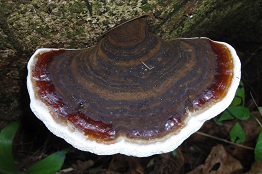
DSC09201
Ganoderma sp.
(Bracket Mushroom)

DSC09228
Rainieria calceata
(Micropezid Fly)
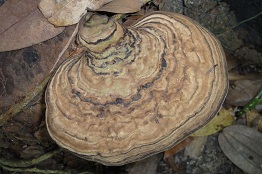
DSC09449
Ganoderma sp.
(Bracket Mushroom)
Statistics:
